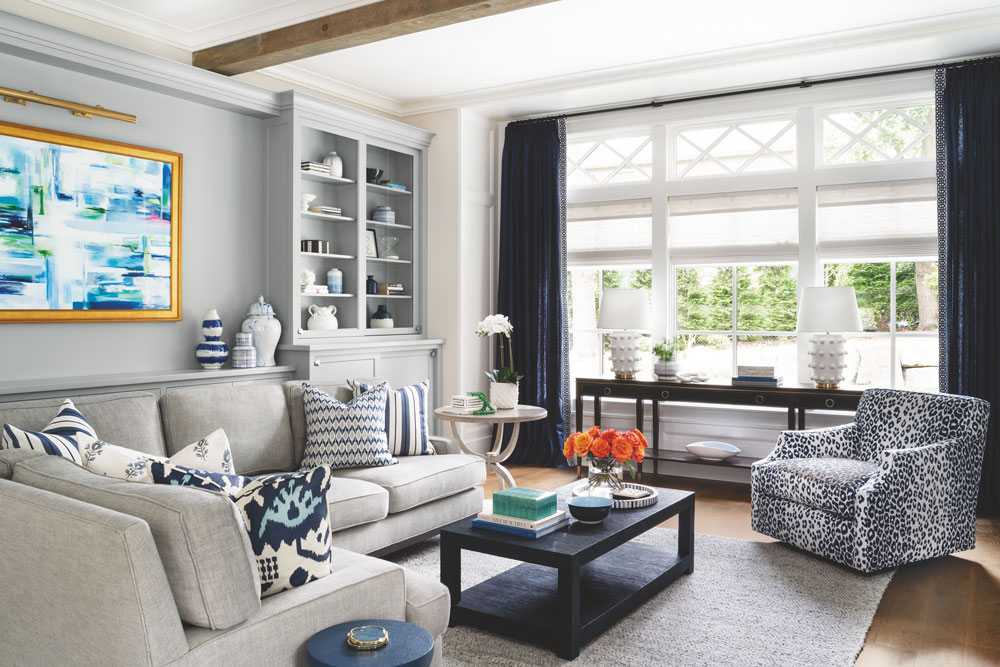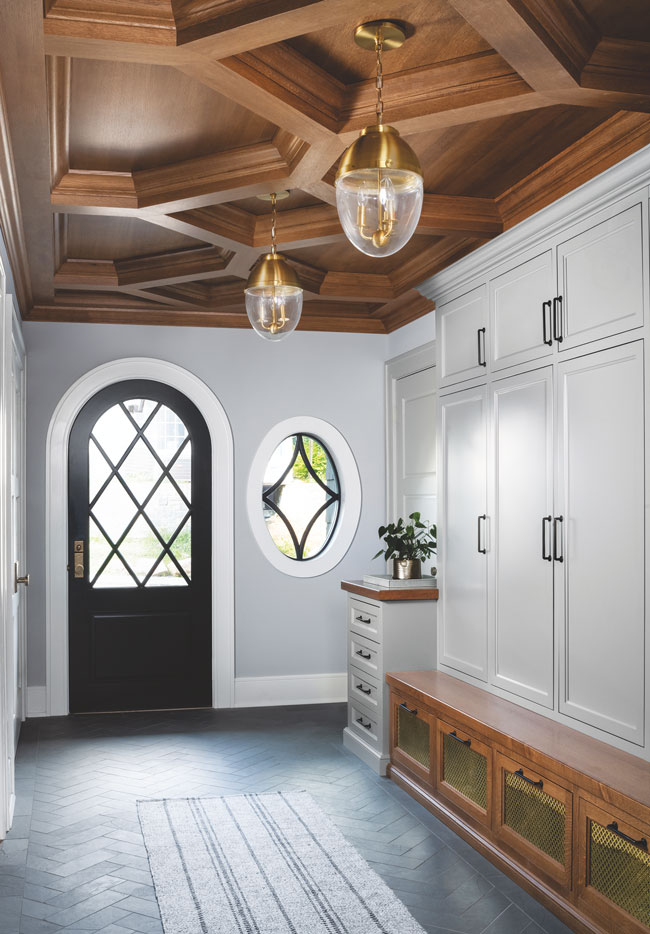Building on Tradition
Writer Marirose Krall | Photographer Robert Radifera for Stylish Productions | Designer Andrea Pietragallo | Architect RDS Architects | Builder Chestnut Hill Development | Location Ridgewood, NJ | Styling Charlotte SafaviA new home in Ridgewood puts a fresh spin on a classic colonial
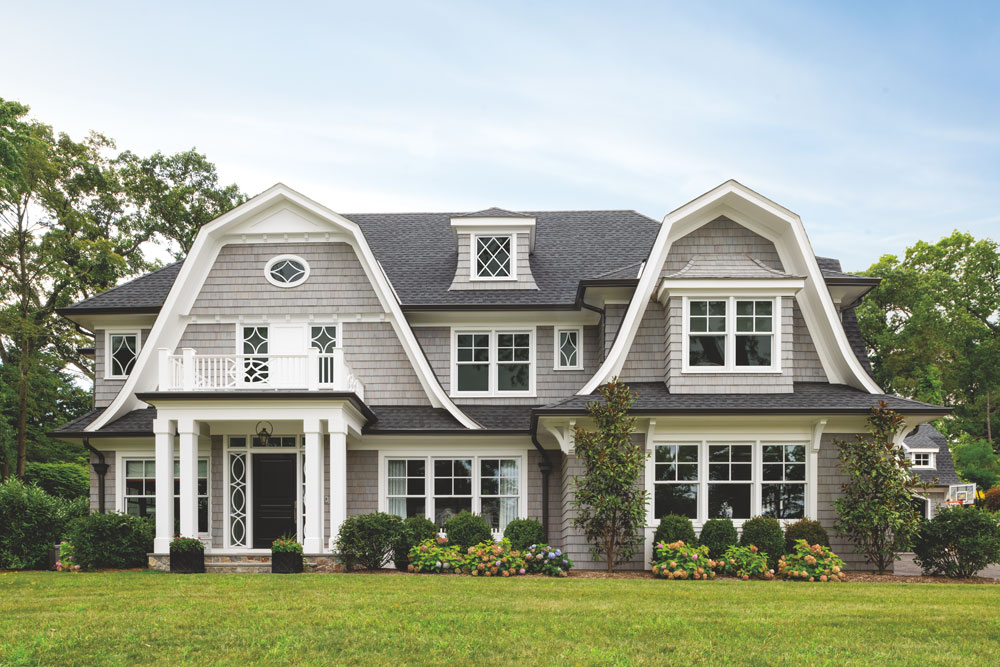
Designer Andrea Pietragallo worked closely with the architect and builder to help bring her clients’ dream of a traditional home to fruition. “We deliberately went with a gambrel-style roof and cedar shingles,” she says.
‘The clients wanted a traditional, New England-feeling home that looked like it had been there forever but had all the luxuries of a new build,” Andrea Pietragallo says of this Ridgewood, New Jersey, residence. Pietragallo, a designer at Britt Design Studio, also in Ridgewood, worked with the homeowners from the project’s architectural phase to ensure they got their wish. “Each room has a traditional purpose and vibe,” the designer notes. But while the spaces have a classic feel, the furnishings represent an innovative interpretation of the aesthetic.
One innovation is the distinctive color palette. “The homeowner wanted us to incorporate Kelly green,” Pietragallo explains. The designer obliged in the dining room. “While that is not a color we work with very often, we placed it in a really prominent spot.” The vivid floral wall covering adds verve to the room’s otherwise neutral palette. “It’s traditional chinoiserie wallpaper, but it’s interpreted in a bright, fresh color.”
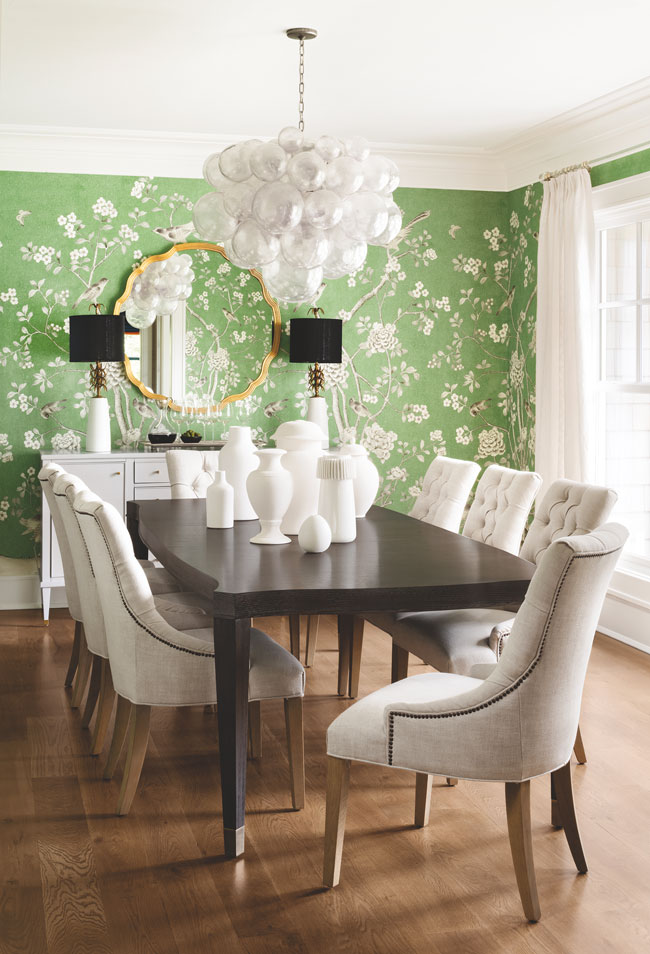
Wallpaper with a traditional chinoiserie design gets a colorful boost with a Kelly green background. The classic wood dining table is crafted of cerused oak, which adds subtle texture and pattern to the space. The tufted chairs feature slim legs for a more contemporary look.
Another fresh accent in the dining room is the striking light fixture, which features hand-blown glass bubbles. “It’s one of my favorites,” Pietragallo says. “It gives the room this ethereal moment and provides a juxtaposition to the more traditional elements.” The designer had to nudge the homeowners to consider the chandelier, but they — and, likely, the neighbors — are now delighted with the choice. “When you drive past this house at night, it looks spectacular from the street, which makes it all the more unique and fun.”
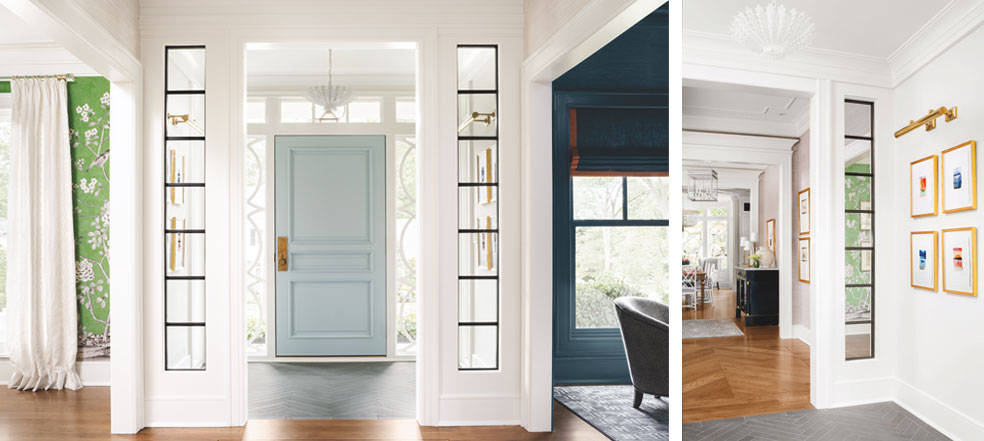
The vestibule is light and airy and provides a counterpoint to the more saturated colors found in the dining room (left) and the library (right).
Artwork, seen when entering the vestibule, is a colorful welcome to the home.
The fun continues in the library, which is swathed in a peacock blue grass-cloth wallpaper. “The adults use the room for cocktails, and they wanted to go bold with color,” Pietragallo says. The deep hue is repeated in the cabinetry, ceiling and window treatments. “We customized the paint to the wallpaper and matched it to the linen in the shades.” The large expanse of saturated color acts as a foil for citrus accents. “These pops of orange stand out against the dark blue. Everything else became a textural accent.”

The ceiling in the peacock blue library features shiplap between coffers. “We wanted the light to stand out,” Pietragallo says of the orange chandelier, “so we created an X design in the ceiling to make it center on the fixture.”
Rich color is the foundation also for the design of the butler’s pantry, where navy built-ins coordinate with the room’s baseboards and ceiling trim. A delicate herringbone paper covers the walls, underscoring the bold colors in the cabinetry, countertop and backsplash. Pietragallo hand-sketched the shape of that backsplash — “a double-step detail going into a gentle swoop” — onto the wall. The double step, which the designer describes “as if you’re looking at a set of steps and there are two of them,” is a detail in all the trim and moldings in the house.
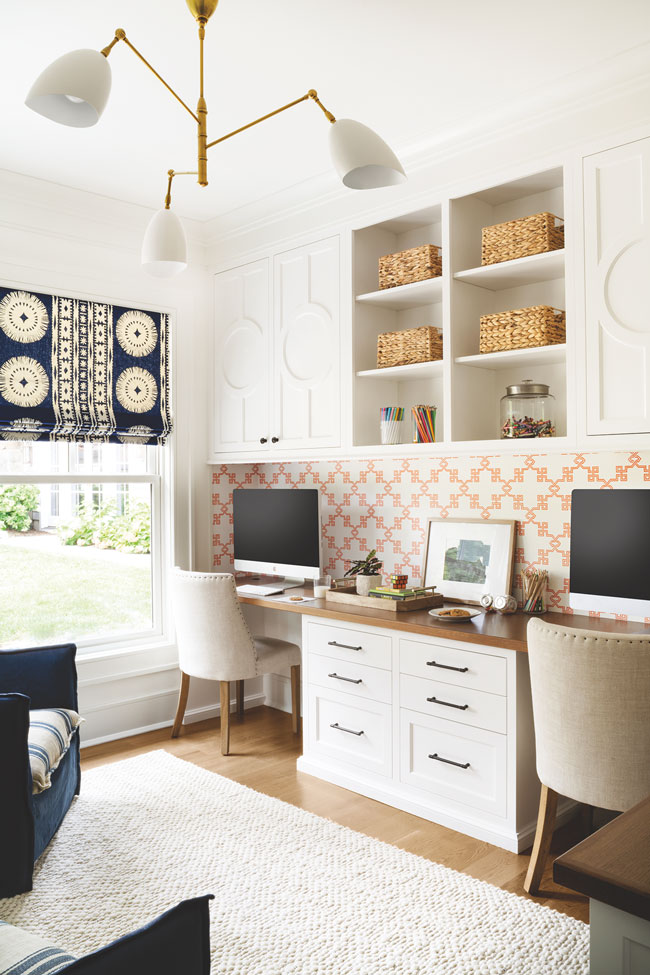
In the office, “we used a traditional-feeling color palette but included the light fixture as a super-fun accent piece,” Pietragallo says. The patterned window treatment, which the designer describes as having “Bohemian flair,” reflects the circular design on the custom built-ins.
The molding in the mudroom is extraordinary, and not just because of its double-step detailing. A dramatic coffered ceiling adds texture and depth to the space. “We worked hard to get the right stain color so it would feel bright, traditional, warm and cozy,” the designer says. “The ceiling is a standout moment everyone loves.” Other standouts in this space are the arched doorway and diamond-shaped grills and opulent pendant lights. These details create an overall affect that’s arresting in a room that can, very often, be an afterthought for homeowners. Not so for Pietragallo; she knew this space would be the point of entry for those closest to her clients. “I call the mudroom door the ‘friendship door.’ This room is the first view into the home that friends and family see.”

The butler’s pantry, located between the dining room and the kitchen, features navy cabinetry accessorized with sizable statement hardware. “We really wanted to make this a space that feels cozy and inviting and still traditional. It’s a spot to stop and have a cocktail.”
When friends and family visit, they find a home that represents a perfectly calibrated blend of the classic and the unexpected. “We incorporated traditional lines in the main pieces,” Pietragallo says. “We made sure there was consistency and fluency, a cohesive feeling. Then we had some fun with the accents and even some of the architectural details. It was a great project.”
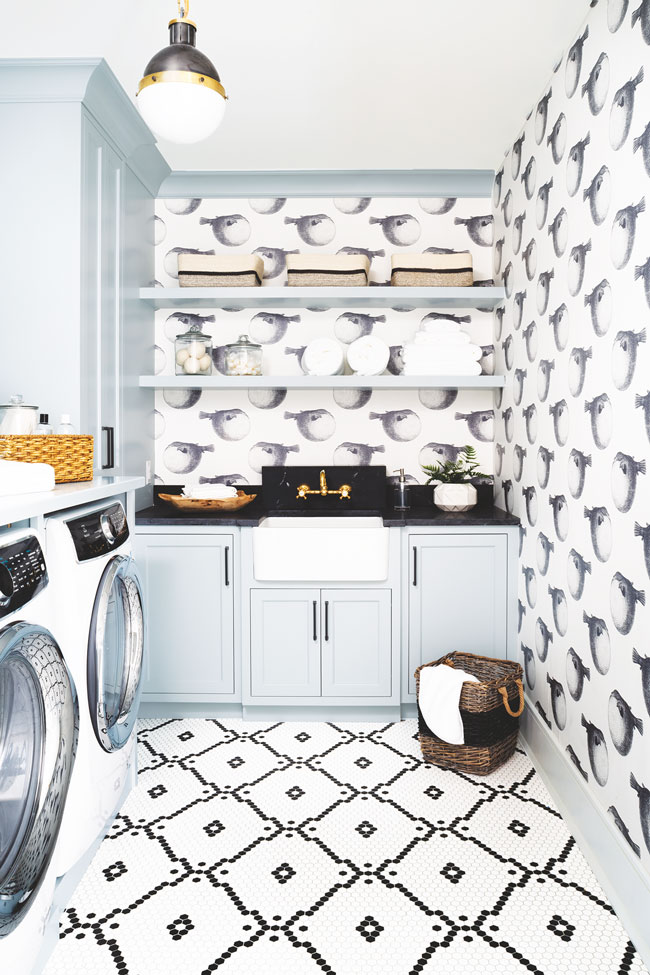
“The black-and-white tile in the laundry room has a traditional feeling,” Pietragallo says, “like tiles you would see in a vintage New York City bathroom.” The rest of the room has a decidedly whimsical feel. “The whole point of this space is to make laundry fun so it doesn’t feel like a chore,” she adds. “You might as well look at puffer fish.”

